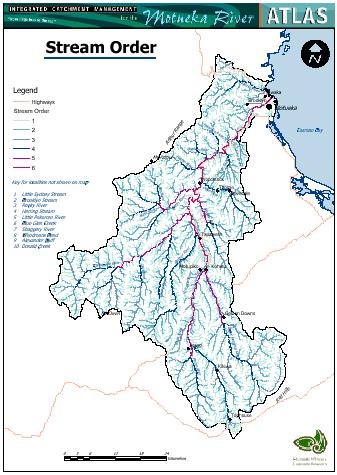Catchments, rivers and streams
Catchment and sub-catchments |
|
The Motueka Catchment is situated at the western margin of the Moutere Depression and drains an area of 2180 km2 - the largest catchment in the Nelson region. It flows into Tasman Bay, a shallow but productive coastal water body of high economic, ecological and cultural significance. The Riwaka River drains a 105 km2 catchment that flows into Tasman Bay 3 km north of the Motueka River. The Sub-catchment Map (4128 KB) shows the main sub-catchments of the Motueka River catchment. Elevation ranges from sea level up to 1600-1850 metres on the catchment divide in the upper reaches of the Motueka. Most of the catchment lies at relatively low elevation, with more than 50% being between sea level and 500 m.
|
|
Rivers and streams |
|
The Rivers and Streams Map (1623 KB) illustrates the major tributaries:
The main stem of the Motueka River rises in the Red Hills and flows north for about 110 km to the sea. The river is joined from the east by a series of small and medium-sized tributaries draining dry hilly terrain, and from the west by a series of generally much larger tributaries, which drain both hilly and mountainous terrain. |
 |
Stream order |
|
| Stream order is a measure of the relative size of streams. Stream sizes
range from the smallest, first-order, to the largest, the twelfth-order
(the Amazon River).
Over 80% of the total length of Earth's rivers and streams are headwater streams (first- and second-order). You can determine stream order from a map of a stream network. The smallest first-order streams are perennial streams, which carry water all year. When two first-order streams come together, they become a second-order stream. When two second-order streams come together, they form a third-order stream. However, if a first-order stream joins a second-order stream, it remains a second-order stream. It is not until a second-order stream combines with another second-order stream that it becomes a third-order stream. The Motueka River is a 6th order river. |
 |
